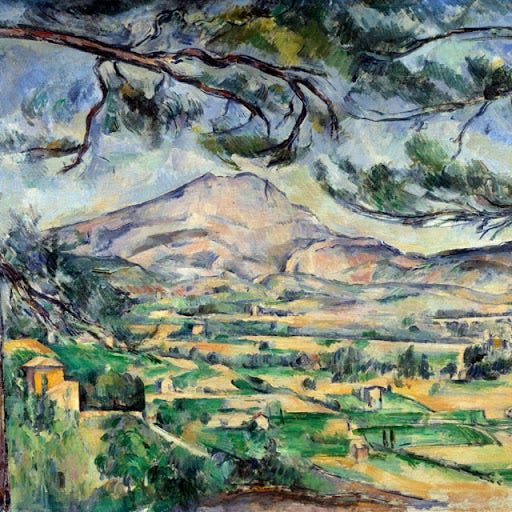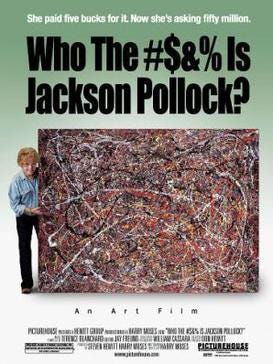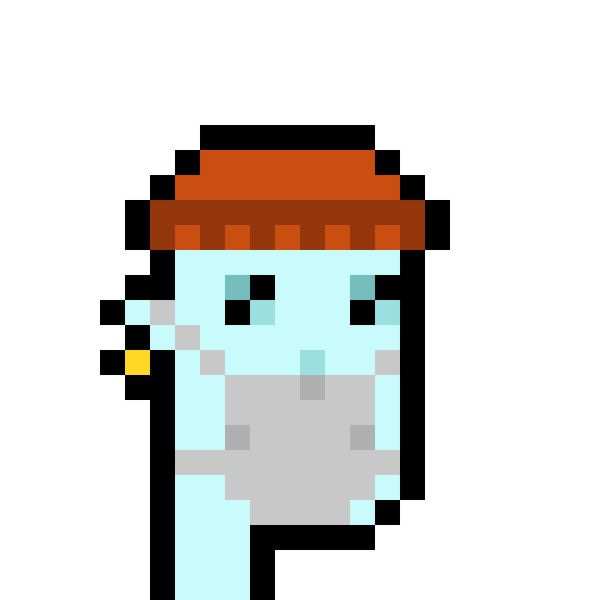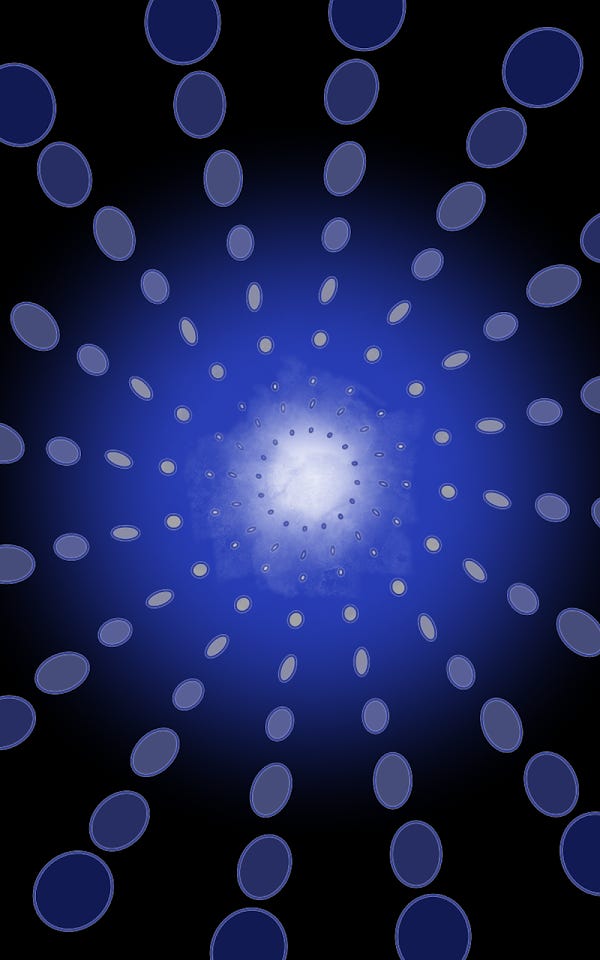What is an NFT?
And why should you care?
What is an NFT?
By now I think everyone has heard of cryptocurrencies, bitcoin being the most famous example, and at least has a vague idea of what it is. Lots of people still think it’s stupid or a ponzi scheme, but at least we have a vaguely shared understanding of what it is. Bitcoins are fungible tokens. My 1 bitcoin is the same as your 1 bitcoin, is the same as Mark Cuban’s 1 bitcoin. They’re like regular fiat currencies in that sense.
NFTs are non-fungible tokens. They are secured and accounted for in the same way* as cryptocurrencies, but they are unique instead of being fungible. This makes them suited for different tasks than cryptocurrencies.
NFTs are more well suited for tracking ownership of unique goods. Right now most NFTs would be best described as art or collectibles, but they have the potential to be so much more.
*Cryptocurrencies rely on something called blockchain technology to secure and account. Basically there is a globally distributed ledger of the current state of the bitcoin network, and the history of transactions that got it there. Then when someone wants to use the network, they broadcast the transaction to the network, and the people who take part in running the network check to see if that transaction is kosher. Once there is consensus amongst the people running the network, the transaction is confirmed and added to the ledger and the current state of the network is updated.
But why?
In the art world there’s one word that reigns supreme and ultimately can be the difference between a piece being worth $100,000,000 or $20. That word is provenance.
Merriam-Webster says provenance is:
The history of ownership of a valued object or work of art or literature.

The above is one of my favorite paintings by probably my favorite artist.
If I print a high resolution version of that image on a canvas that is the same size as the original, can I sell it for the millions of dollars the original is worth? No I can’t, because everyone knows it is not the original. The piece does not have provenance.
What if I find a painting that looks an awful lot like it was painted by a famous master, but the art world doesn’t know about it? Well then I might just be truck driver Teri Horton who was the protagonist in a documentary all about this:
She bought the painting as a gag gift for a friend, but it was too big so she set it out at a yard sale where a local art teacher said I think that might be an obscenely valuable painting by Jackson Pollock. The title of the documentary was her response. What ensues is a battle between a blue collar worker and the art world’s insular nature and obsession with provenance. Ultimately, she was never able to sell the painting for the amount she wanted, because the piece had no provenance.
No such debate over the authenticity of a piece needs to happen with an NFT, all the data is right there on the blockchain for all to see. Blockchain technology’s way of accounting and securing crypto assets (be they cryptocurrencies or NFTs) is publicly distributed provenance.
But actually why?
So far we have figured out that NFTs are unique digital “tokens” with trivially verifiable ownership. You can prove they are authentic and who owns them, but to what end? I had some friend’s that were into NFTs before me, and they tried to convince me they weren’t just ways for scam artists to make money selling people worthless jpeg files. It wasn’t until I read a post by PackyM on his fantastic substack “Not Boring” that I was sold on the idea. Here is a powerful quote from early in that post:
I have no idea, and instead of singling out any company or NFT, a thought exercise seems more appropriate, based on three ideas that keep coming to mind:
A main Not Boring theme that Genies don’t go quietly back into bottles.
Chris Dixon’s famous line that “the next big thing will start out looking like a toy.”
Ben Thompson’s idea that media businesses are the first to adapt to new paradigms because of their relative simplicity, and others follow later.
Taken together, what I see happening is this:
The Creator Economy and NFTs are massive human potential unlocks. Even if certain assets are in a short-term bubble, we are on an inexorable march towards individuals mattering more than institutions.
We’re on the precipice of a creative explosion, fueled by putting power, and the ability to generate wealth, in the hands of the people. Armed with powerful technical and financial tools, individuals will be able to launch and scale increasingly complex projects and businesses. Within two decades, we will have multiple trillion-plus dollar publicly traded entities with just one full-time employee, the founder.
That sounds pretty cool to me. Let’s dig into idea 2: "the next big thing will start out looking like a toy.”
What NFTs are out there right now?
Right now the vast majority of NFTs in existence are probably best described as art or collectibles. I’m gonna discuss a few specific examples, starting with stuff that is purely just for owning and appreciating (e.g. art and collectibles), and move through to some more complex stuff that exists now. In the next segment I’ll talk about what kinds of things I see for the future of NFTs.
CryptoPunks

CryptoPunks were created in 2017 by software developers Matt Hall and John Watkinson. They are amongst the very first things created that we would now call an NFT. In the Crypto subculture they are the ultimate status symbol. If you spend any time on twitter exploring the world of Crypto you will find yourself reading a lot of tweets by people who use one (that they presumably own) as their avatar. The cheapest one currently available for sale is $35,760 (September 7th update: $301,870). The most expensive one ever sold is this one:
It just sold for $11.8 million at Sotheby's auction house in London on June 10th. Why can’t you just right-click that and save the image? Well, you can, but you’d own CryptoPunk #7523 by doing that just as much as I’d own Cezanne’s Mont Sainte-Victoire by getting a print of it made. You and I would have no provenance, we would have a copy of the original, that looks just like the original, but is not the original. And therefore has no value. There are many NFT projects that are inspired by Punks, and currently the one attaining the most success in it’s own right is something called Bored Ape Yacht Club. My friend Roy did a great write up on them that you can read in his substack here: Part 1 and Part 2.
Artblocks
Artblocks is at the forefront of what is called generative art. Here is how they describe what they do:
Art Blocks is a first of its kind platform focused on genuinely programmable on demand generative content that is stored immutably on the Ethereum Blockchain. You pick a style that you like, pay for the work, and a randomly generated version of the content is created by an algorithm and sent to your Ethereum account. The resulting piece might be a static image, 3D model, or an interactive experience. Each output is different and there are endless possibilities for the types of content that can be created on the platform.
Imagine if someone like Pollock, Diebenkorn, Rothko, or Mondrian was computer literate enough to write computer code; they could set up parameters in code to describe the series of works they want to create, and run the code. Once the code is producing output that matches their artistic vision they can pick a size for the series (my two favorite Artblocks collections have 600 and 999 pieces in them respectively) and have the series go live. Then people can pay for one, the code would then run with a randomized input to create a completely new and unique work within the parameters laid out by the artists code.
Here are 6 pieces each from my two favorite Art Blocks projects so you can get a feel for what I’m talking about:
Beautiful art if you ask me. It has the beauty and artistic kernel of the old world, but utilizing technology to innovate and scale up the ability to make unique works in a way that a traditional artist never could. The code for these could have been run 10,000 times instead of 600 and 999, and you’d have 10,000 beautiful and unique pieces of art that still shared an artistic kernel and approach spelled out in the code used to create them, and in the results we see after.
Zed Run
So what if you want your NFTs to do something more than sit there and look nice like Artblocks pieces, or convey status like a CryptoPunk? Well maybe Zed Run is right for you. Zed Run is a digital horseracing game/platform. Each horse is an NFT that you can own. You can breed them to make new ones, but most importantly you can race them, for real money, against other horses.
Here is a page describing the stats of one of the strongest racers in the game right now: “Steph Curry” If you look at it’s profit you will see 4.3495 ETH; at today’s price of $2331 per ETH that horse has made it’s owner $10,138 over the course of 1527 races. Not bad for a digital racehorse that you don’t need to feed or house!
The races are fun to watch and there is a new one starting just about every minute. They vary in length from 1000 meters to 2600 meters, and different horses have different preferences for race length. Some are sprinters, and some are distance runners. Some are well rounded racers that can compete fairly well across any distance. There’s a lot more to it than I’ve spelled out, and the developers have big plans for other features to be added. It is a very cool project that is far ahead of virtually every other NFT project when it comes to providing utility, fun, and interactivity for your NFTs. Here is a link where you can watch a replay of a race “Steph Curry” was in yesterday. Make sure to turn on the music and adjust the camera for maximum enjoyment.
ENS Domains
What if you don’t like status, art, or fun? Don’t fret, there’s still NFTs for you! ENS (Ethereum Name Service) are somewhat like a cross between a screen name and a domain name.
Let me give you a simple example using mine. My ethereum address is is a random jumble of 42 alphanumeric characters (I would put the actual thing but it appears as though Substack doesn’t allow eth addresses in posts, or links to NFT marketplaces) . If you want to send me ethereum, or any token that rests on top of the ethereum network (which is where most NFTs exist), you would need to use that address. At least you would have until a couple days ago when I bought jaimek.eth for about $40 for 3 years. Now you can just send to jaimek.eth, and anywhere on the web where my address was displayed (for instance on my Opensea page, Opensea is the most popular NFT marketplace) has had jaimek.eth pushed to it automatically. The advantage for the sender is small because they can just copy and paste an unwieldy ethereum address, but if you ask me what my address is because you want to send me something, it’s a lot easier for me to just quickly reply jaimek.eth than it is for me to look or up try and memorize the 42 character monstrosity that was my eth address before registering the ENS domain.
For a nice 17 tweet thread on the further potential of ENS Domains you should read this:


The Future of NFTs
The potential for NFTs in the future is massive. They will change the way we do so many things, and change them for the better. Creatives and their audience will be able to eliminate the middlemen and gatekeepers separating them. Anything involving keeping a trustworthy record of something, and the entities around those somethings, will be able to be improved or disintermediated by NFTs. If some country’s passports (which keep a record of the international movement of individuals) are NFTs in under 10 years I will not be surprised. If title insurance company’s vanish into the night because making property titles NFTs eliminates anyone’s need for them, I will not at all be surprised.
My Project
As I discussed in my very first post on this substack, Doing Things You Aren't Good At (Yet), I believe strongly in the human potential to develop new skills and that if we work at things we aren’t good at currently, and keep at it, we will amaze ourselves with our potential once we are further down the road.
So I am once again trying to do that, in the same vein as I did with painting as I talked about in that post, except this time I’m doing it digitally. I got a nice tablet with a pen for my birthday and I have decided to try and create one abstract piece of art every day on it (inspired by Beeple’s “Everydays” which he started in 2007 and has kept going for over 5000 consecutive days); I am on day 9 right now. Each day I am minting the piece as an NFT and putting them up for sale for .01 ETH (about $23) on OpenSea.io in a collection called “Abstract of the Day.” Some of them I like, some of them I am less proud of. So far they are only the works of an extremely green digital artist, but I know if I keep at it I will be very happy with the progress that I make. Here’s a couple of my favorites I’ve done so far in the first 8 days:
Where can I learn more?
For a zoomed out view of their potential I’ll again recommend PackyM’s post “Power to the Person”
My friend Roy’s substack Letters from a Zeneca generally covers a current NFT project each week in a way that is both thorough and succinct. Stay tuned because we have an NFT focused podcast in the works that we will be hosting together, and that should provide people with a regular discussion about what’s happening in the NFT space and what we think about it.
Some other projects doing innovative things with NFTs are:
Most the discussion of NFTs seems to happen on twitter or in Discords specific to an NFT project or artist.
If you have any other good resources you’d recommend for learning about NFTs in general or specifically, leave a link in the comments.
This was a long one, thanks for reading it. I hope you found it informative. I know so many people in the NFT space want a link they can send to people they know who are curious or skeptical about NFTs, and I tried to create that with this post. I also know so many people outside of the space who want to know about it but don’t know where to look to get an overview, and I tried to create that with this post. Please pass it along to anyone you know who is looking to wrap their minds around NFTs.









Very good primer on NFT's Jaime and I'm digging the learning in public too with the art!
I love your podcast and I will definitely learn a lot from you guys!
If the offer is still available I would love a piece of your art to godl and sell in 5 years at a public action for 50 eth
0xf6D4495374063f034DBe1dedF29a86F689E541d6